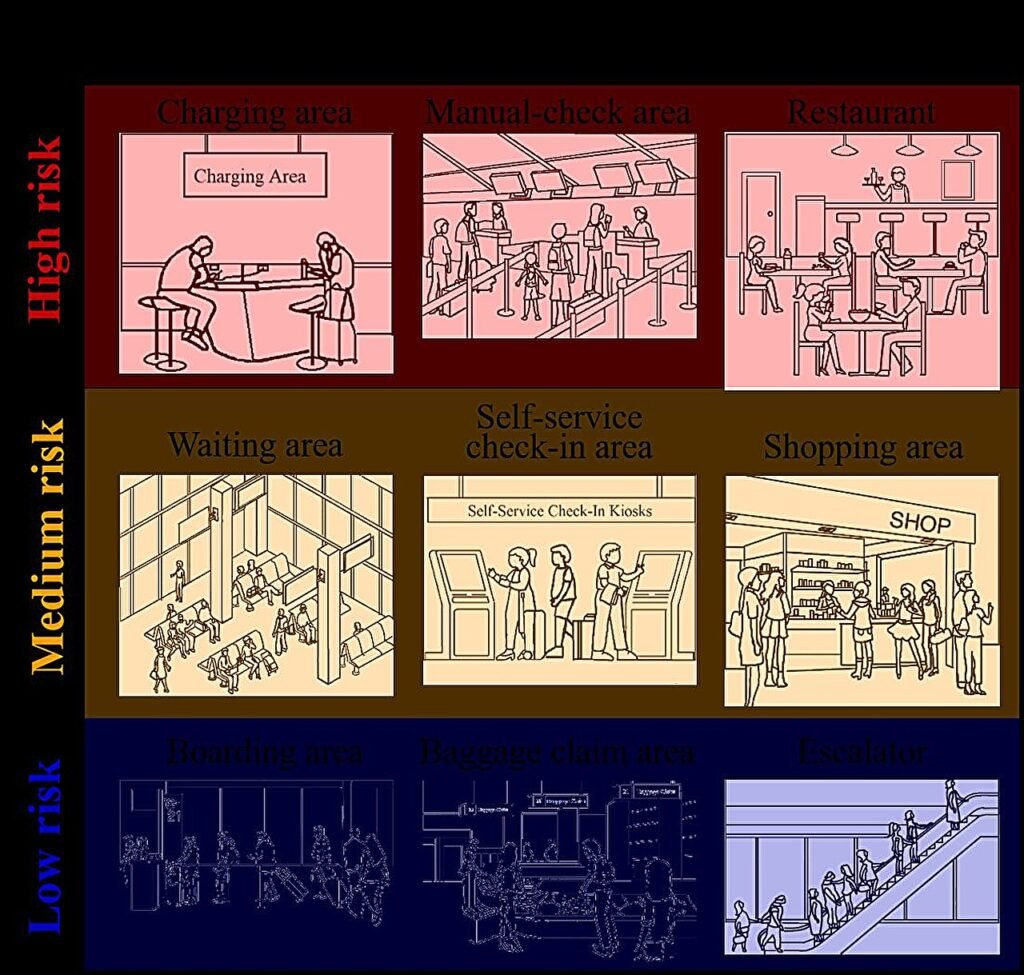In a recent study published in the open-access journal PLOS Computational Biology, researchers have found that regularly disinfecting surfaces every two hours can significantly reduce norovirus infections in airports. Norovirus is a highly contagious gastrointestinal virus that causes severe vomiting and diarrhea, leading to millions of cases and thousands of deaths each year.
The study, led by Nan Zhang of the Beijing University of Technology, focused on the transmission of norovirus through surface contact in airport environments. By analyzing real touch data collected from video footage and simulating the risk of infection, researchers were able to assess the effectiveness of various interventions in preventing the spread of the virus.
The findings revealed that without any interventions, restaurants in airports posed the highest risk of norovirus transmission to travelers. However, disinfecting public surfaces every two hours reduced the risk of infection by an impressive 83.2%. In comparison, handwashing every two hours only resulted in a 2.0% reduction in risk, while mask-wearing reduced the risk by 48.0% due to preventing face touching.
Additionally, using antimicrobial copper or copper-nickel alloy coatings on public surfaces showed a significant decrease in infection risk, ranging from 15.9% to 99.2%. These findings highlight the importance of implementing targeted infection prevention and control strategies tailored specifically for norovirus in airport settings.
The researchers acknowledge that the data was collected during the COVID-19 pandemic, which may have influenced surface-touching behaviors. However, the study’s simulated results emphasize the effectiveness of regular surface disinfection, mask-wearing, and antimicrobial surface coatings in mitigating the spread of norovirus through surfaces.
In conclusion, the study underscores the importance of proactive measures such as frequent surface disinfection in reducing norovirus infections in high-traffic environments like airports. By implementing these interventions, airports can enhance the safety and well-being of passengers and staff alike.
For more information, the study can be accessed in the PLOS Computational Biology journal (DOI: 10.1371/journal.pcbi.1012561). This research provides valuable insights for developing effective strategies to combat norovirus transmission in airport settings.
This article is based on the study “Cleaning surfaces every two hours cuts norovirus infections by 83% in airports” published on December 5, 2024, and can be referenced at https://medicalxpress.com/news/2024-12-surfaces-hours-norovirus-infections-airports.html.


